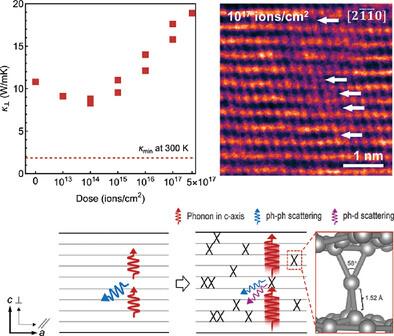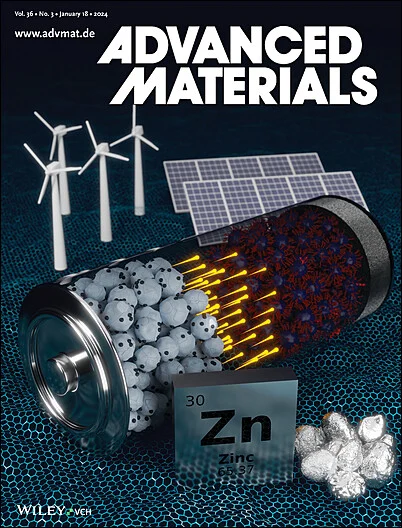Point Defects Enhance Cross-Plane Thermal Conductivity In Graphite
IF 27.4
1区 材料科学
Q1 CHEMISTRY, MULTIDISCIPLINARY
引用次数: 0
Abstract
Point defects typically reduce the thermal conductivity (κ) of a crystal due to increased scattering of heat-carrying phonons, a mechanism that is well understood and widely used to enhance or impede heat transfer in the material for different applications. Here an opposite effect is reported where the introduction of point defects in graphite with energetic particle irradiation increases its cross-plane κ by nearly a factor of two, from 10.8 to 18.9 W m K−1 at room temperature. Integrated differential phase contrast imaging with scanning transmission electron microscopy revealed the creation of spiro interstitials in graphite by the irradiation. The enhancement in κ is attributed to a remarkable mechanism that works to the benefit of phonon propagation in both the harmonic and anharmonic terms: these spiro interstitial defects covalently bridge neighboring basal planes, simultaneously enhancing acoustic phonon group velocity and reducing phonon–phonon scattering in the graphite structure. The enhancement of κ reveals an unconventional role of lattice defects in heat conduction, i.e., easing the propagation of heat-carrying phonons rather than impeding them in layered materials, inspiring their applications for thermal management in heavily radiative environments.

求助全文
约1分钟内获得全文
求助全文
来源期刊

Advanced Materials
工程技术-材料科学:综合
CiteScore
43.00
自引率
4.10%
发文量
2182
审稿时长
2 months
期刊介绍:
Advanced Materials, one of the world's most prestigious journals and the foundation of the Advanced portfolio, is the home of choice for best-in-class materials science for more than 30 years. Following this fast-growing and interdisciplinary field, we are considering and publishing the most important discoveries on any and all materials from materials scientists, chemists, physicists, engineers as well as health and life scientists and bringing you the latest results and trends in modern materials-related research every week.
 求助内容:
求助内容: 应助结果提醒方式:
应助结果提醒方式:


